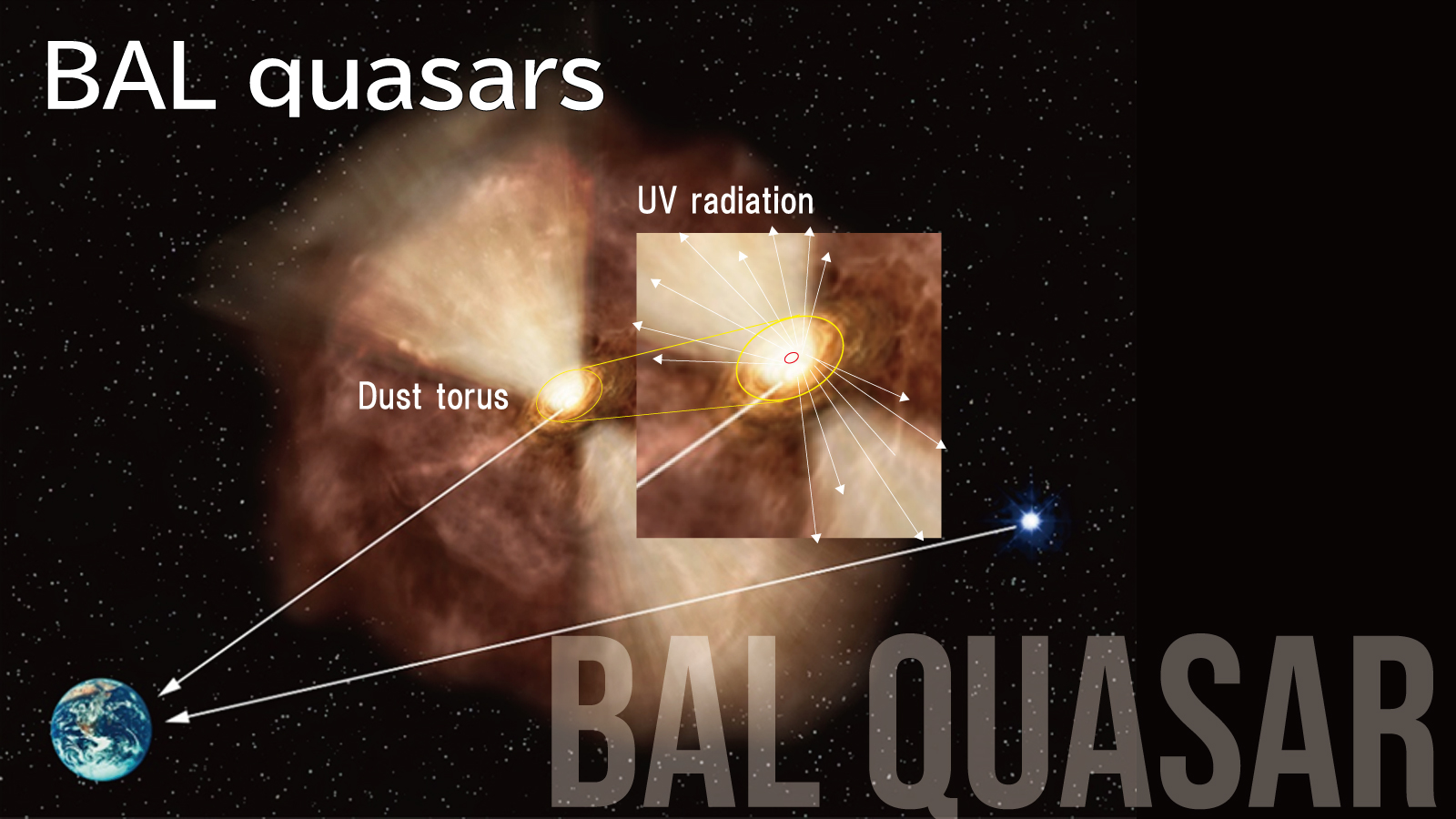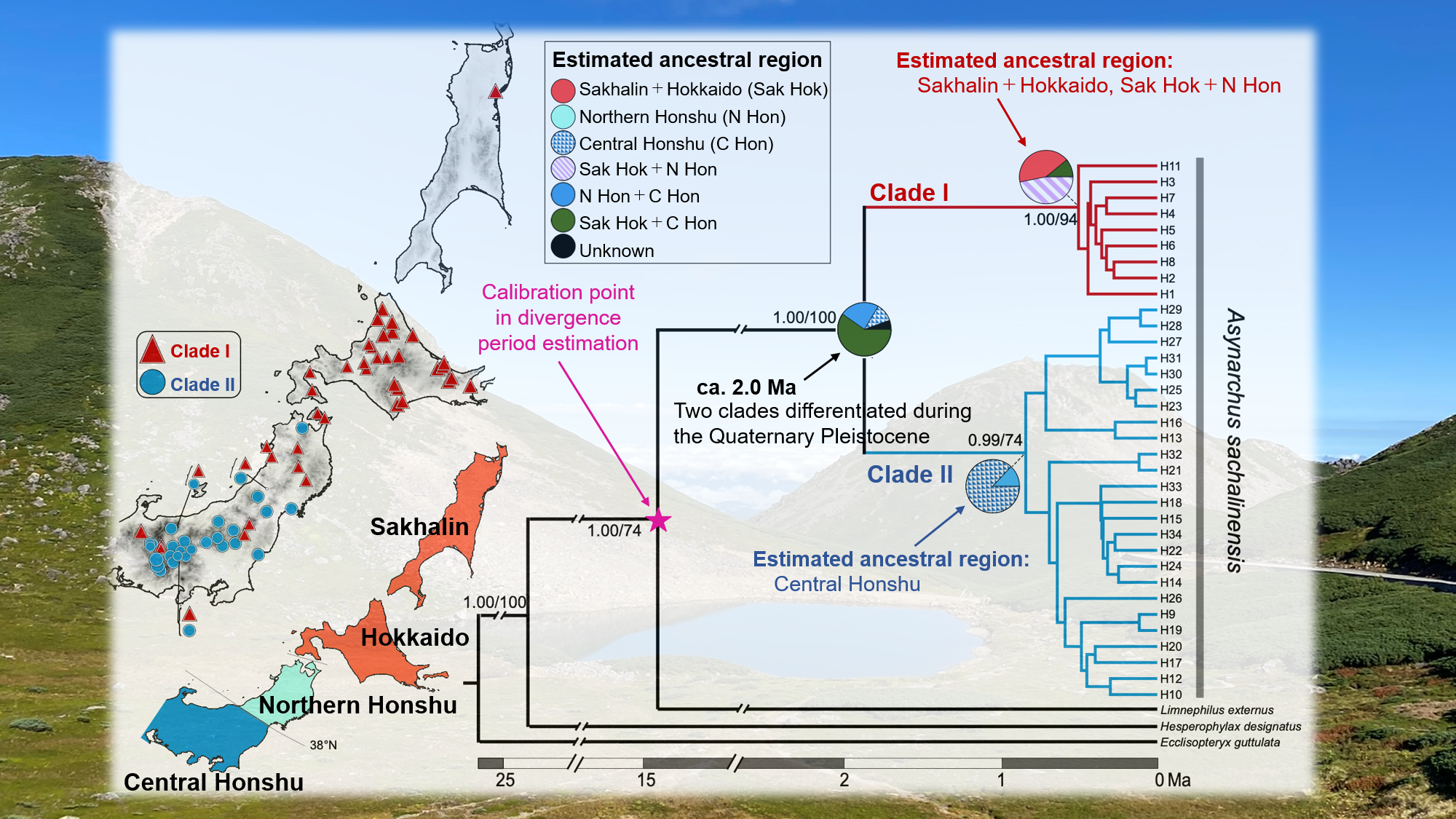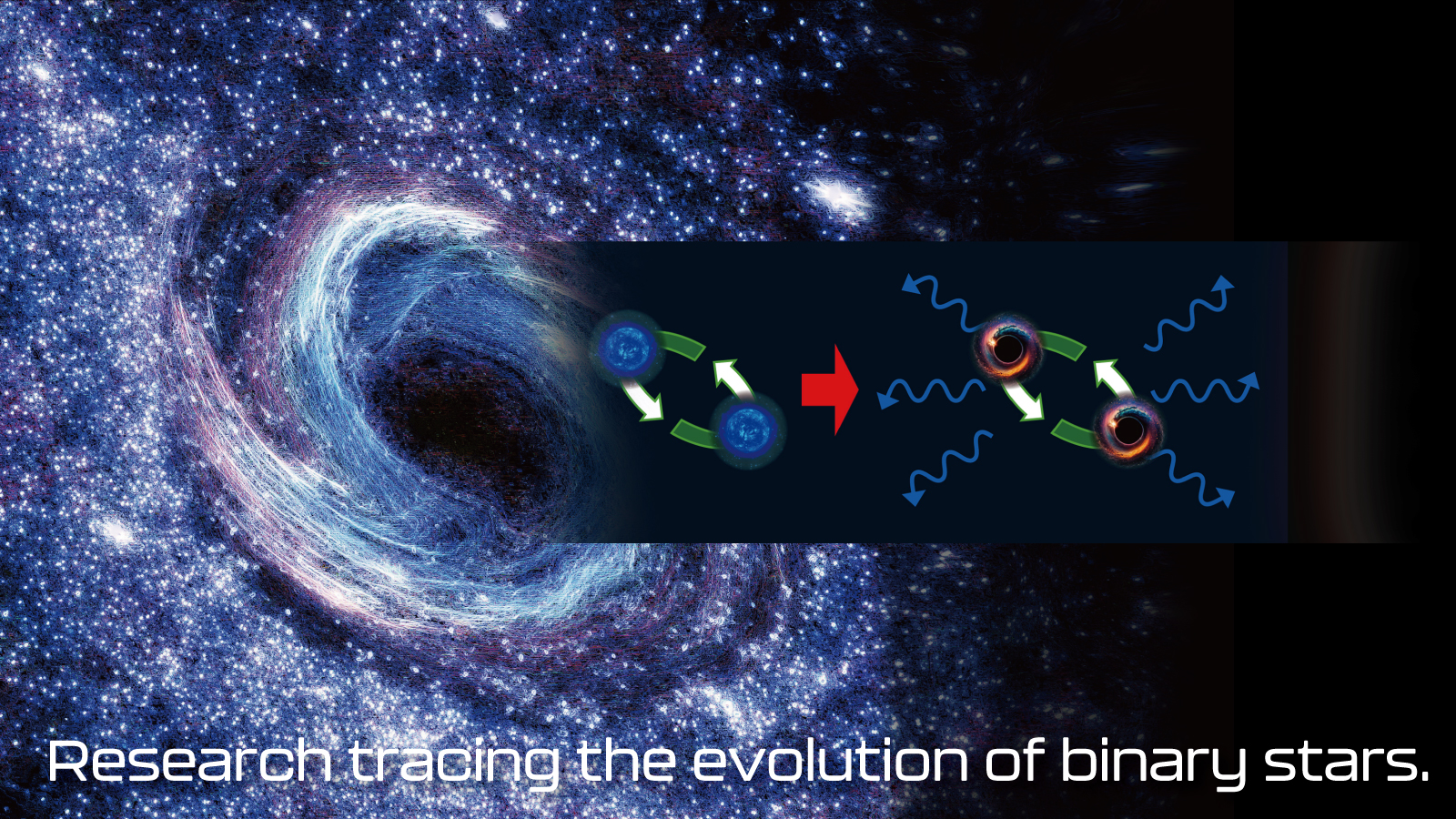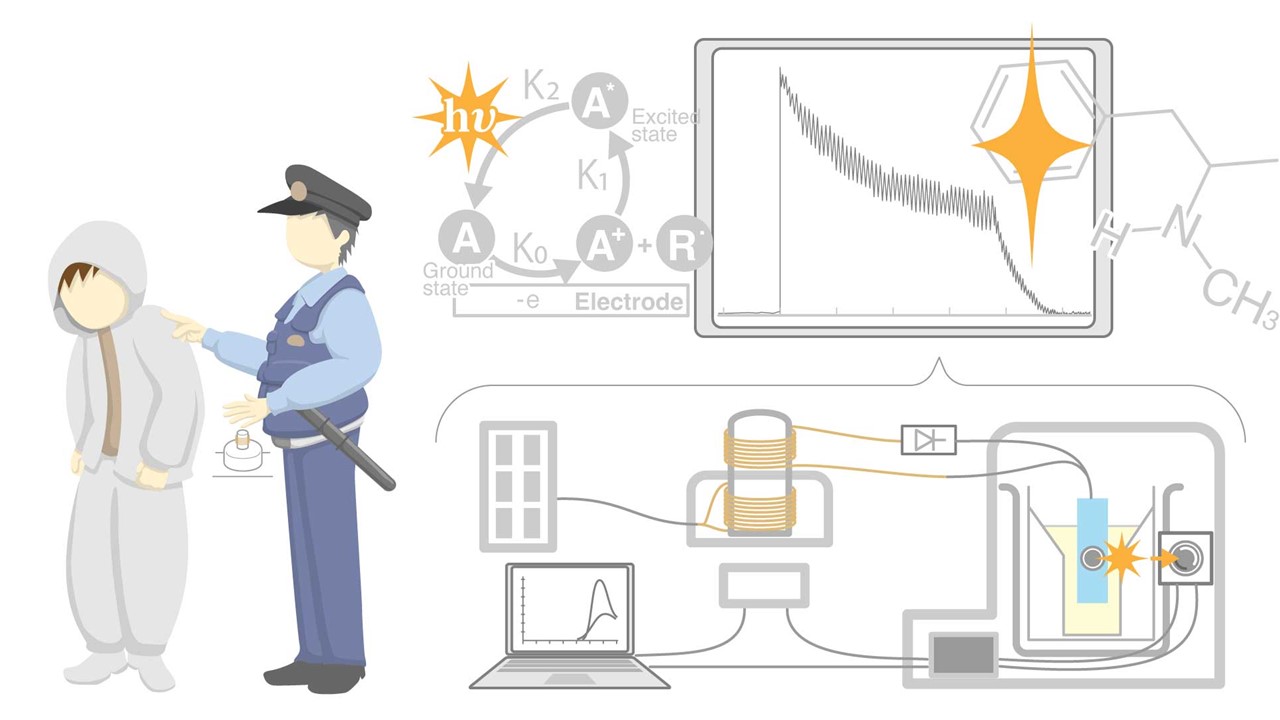Natural Sciences, Social Sciences, and Humanities
Release date:April 24, 2025 10:29 AM
Center for General Education"Dust torus" influences ionization bias in the gas around quasars, providing clues to understanding the formation of stars

Quasars (*1), luminous nuclei of distant galaxies, ionize the surrounding hydrogen gas with strong ultraviolet (UV) radiation. However, the ionization level is biased depending on the direction. The team led by Professor Misawa Toru of the Center for General Education of the Academic Assembly (Institute of Humanities) revealed that the “dust torus”, a donut-shaped shielding structure surrounding a black hole, possibly influences the bias in ionization. The findings of this study will provide important clues that will help us gain an understanding of the formation of stars around quasars and the internal structure of quasars.
Anisotropic Radiation from Quasars
The super massive black holes at the center of galaxies gravitationally attract the surrounding gas and dust. They heat up and release energy in the form of electromagnetic radiation. Objects in this state are called “quasars”. Quasars are considered important targets for studying galaxy formation and evolution. Exposure to the strong UV radiation results in the ionization of neutral hydrogen gas around the quasars. If the quasar’s UV radiation is isotropic, the ionization level should be almost constant regardless of the direction seen from the quasars.
However, previous studies have shown that this is not actually the case. Hydrogen gas in the region transverse to quasars (i.e., sideways to the direction of observation by telescopes) are less ionized than those along the line of sight (i.e., the direction of observation from Earth). The reason for this remains to be elucidated, although previous studies have suggested that a doughnut-shaped structure of gas and dust called a “dust torus” may block UV radiation toward the tangential direction.
Unique Observation of Difficult-to-analyze BAL Quasars
In previous studies targeting normal quasars, the inclination angle of dust torus seen from Earth cannot be determined. Professor Misawa and his team were able to narrow down the inclination angle of the dust torus by observing “BAL quasars” (*2) that are characterized by broad absorption lines in their spectra. They revealed that the existence of the dust torus is likely to cause the anisotropy of the ionization level around the quasars.
Their findings suggest that quasars are observed as BAL quasars when the dust torus is observed from the side. The past studies have already suggested that normal quasars (i.e., non-BAL quasars) would be observed when we observe the dust torus from the face-on direction; however, this was only speculation. Professor Misawa and his team observed the degree of ionization of hydrogen gas in the tangential direction of BAL quasars and revealed that the ionization level is higher than those in the line-of-sight direction, which is an opposite trend seen around normal quasars.
BAL quasars had been rarely observed for studying the ionization condition around quasars owing to the difficulty of analysis. However, this study succeeded in making a new discovery by daring to observe BAL quasars.
Unraveling the Mysteries of Star and Galaxy Formation and the Internal Structure of Quasars
The star formation efficiency depends on the ionization level of hydrogen gas. Thus, the results of this study will provide important information regarding the star formation activity around quasars. In addition, the indirect confirmation of the existence of a dust torus marks an important step toward understanding the internal structure of quasars.
The Subaru Telescope (*3) has begun operation of a new instrument, the Prime Focus Spectrograph (PFS), in 2025. The PFS will enable the simultaneous observation of up to 2,400 targets. Professor Misawa aims to continue to further unravel the mysteries of quasars and galaxies using this spectrograph.
Points
The degree of ionization of the gas surrounding “quasars” varies with direction; the reason for this remains a mystery.
Professor Misawa Toru and his team confirmed that the “dust torus” is likely to cause the anisotropy of the ionization level around quasars.
The findings of this study also provide important clues for understanding the internal structure of quasars.
Keywords
- *1 Quasars
Extremely bright and energetic objects at the center of some distant galaxies, powered by super massive black holes that gravitationally attract surrounding matter, releasing enormous amounts of energy in the form of electromagnetic radiation.
- *2 BAL quasars
Quasars with broad absorption lines (BALs) in their spectra, indicating outflow gas moving away from the quasars at high velocities.
- *3 Subaru Telescope
The National Astronomical Observatory's 8.2-m optical-infrared telescope located on Mauna Kea (4,200 meter above sea level) on the island of Hawaii.
Paper
Journal:The Astrophysical Journal (2022, 933(2), 239)
Title:Exploratory Study of Transverse Proximity Effect around BAL Quasars
Author:Toru Misawa, Rikako Ishimoto, Satoshi Kobu, Nobunari Kashikawa, Katsuya Okoshi, Akatoki Noboriguchi, Malte Schramm, Qiang Liu
Tag
Related Topics
Related Topics
-

Faculty of Science
Creating species diversity: Analyzing the genes of organisms present in the harsh environments of alpine zones
-

Faculty of Engineering
Impact of binary interactions on the evolution of supernova progenitors
-

Center for General Education
"Dust torus" influences ionization bias in the gas around quasars, providing clues to understanding the formation of stars
-

Faculty of Economics and Law
Discrepancies between risk attitudes and prevention behavior: examination of human decision-making through an economic experiment
-

Faculty of Science
Development of analytical technology for the safe and easy detection of controlled drug toxicants
